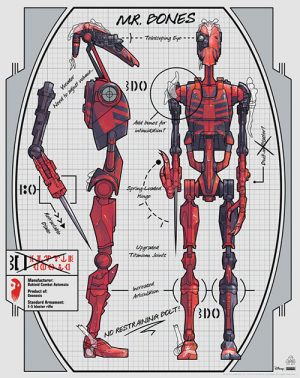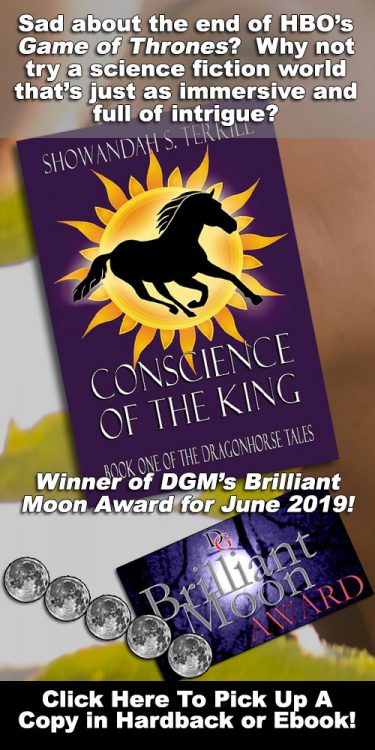 Author: Chuck Wendig
Author: Chuck Wendig
Publisher: Del Rey
Genre: Sci-Fi/Fantasy (Space Opera)
Unique Elements: An interconnected universe that is equally ruled by science and the Force, with its greatest heroes and villains rising from the Skywalker clan.
Series: Star Wars: Aftermath
Release Date: July 12, 2016
Number of Page: 448 pages
MSRP: $28.99 (HC); $29.95 (Audio); $14.99 (Kindle)
Discount: Click Here
Website: Click Here
Purchase Site: Click Here
Reviewed by: Jeremy T. Hanke
Final Score: 4 Moons (out of 5)
Shortly after the events of Life Debt, Nora Wexley, her son Temmin, the deadly (but now, strangely cuddly) robot, Mister Bones, and their crew of rebel miscreants find themselves hunting down escaped Imperial leaders for a New Republic war tribunal.
Meanwhile, Grand Admiral Rae Sloane has become the Imperial reflection of Princess Leia–the face of an Empire who honestly believes the strength and bureaucracy it provides is justified and needed. However, the hidden Gallius Rax and his shadow council have special plans for the New Republic, striving to manipulate not just Sloane, but Wexley’s crew and even the great Han Solo to serve the empire.
The Elephant In The Room
There were a lot of people (myself included) who had problems with Wendig’s first Star Wars book, Aftermath. For me, those problems were far more based on Wendig’s rather bizarre structural choice of writing in “third person present tense” (as opposed to “third person past tense,” which most novels are written in), than due to the fact that the book was built up by Disney/Lucasfilm to be the “pivotal” book in the journey to The Force Awakens. (With this kind of buildup, there was a lot of blowback from fans who were disappointed with the fact that, other than a cameo by Han and Chewie, the book featured almost no people we were familiar with aside from Wedge Antilles–who is actually in the original trilogy approximately 5 minutes.)
Despite the fact that Wendig continues his use of First Person present for telling this tale, his flow has gotten better in this book than in the last book, but it still took 40 pages for my brain to adapt to crushing his present tense into the past tense that I (and most people) read novels in–the equivalent of closing one eye while watching a 3D film, because the film company didn’t release a 2D film.
As that’s clearly not what the author wanted to have happen, I think this book series would be well served to offer a past tense conversion of the books when the final book comes out in 2017. In the future, LucasFilm could use Wendig’s idea to make more money and maybe pave the way, by selling a version of the book in “standard” format in “past tense,” but then offering an “Upgraded” book in “immersive world writing” (or some such terminology) in the “present tense” that Wendig seems to prefer. (Having a couple type editors switch tense for a novel is much faster and easier than the work LucasFilm put into making a 3D version of The Force Awakens after JJ Abrams shot it in 2D.) That would encourage more people to check out these great books.
(For those who love audio books, I would highly recommend you check this out in audio format, as it makes the story SOOO much easier to follow, because you’re more used to hearing stories spoken in present tense than you are reading ones written that way. Additionally, Marc Thompson—who narrated the first Aftermath book—does perhaps an even better job on this one, and, like all Star Wars audio editions, includes sound effects and even music to make the work more immersive.)
Story
I found the story of Life Debt to be quite a bit more engaging than Aftermath’s was, not just because you’re now prepared for Wendig’s style and pool of characters, but also because you’re beginning to see how all of the characters are interacting with the galaxy as a whole.
With the sequel coming out after the release of The Force Awakens (unlike the original Aftermath), we’re now aware that Temmin Wexley is indeed a named character in that film (albeit in a role that, so far, hasn’t been much more pivotal than that of Wedge Antilles in the original films), which gives us some added incentive to learn more about him. Additionally, Han Solo and Chewbacca have much more defined and substantial roles in this book, as does Leah and Mon Mothma. It makes the blend of old and new characters seem much more well-rounded and further enhances the story arc.
One of the story choices continues to Wendig use that I personally appreciated is that of brief vignettes—or “snapshot” scenes—almost like channel surfing during a commercial break between major story points, showing how a variety of smaller groups of people are surviving between Return of the Jedi and The Force Awakens.
Those who ignore these seemingly non-sequitor scenes will miss out on a ton of cool info tied into The Force Awakens including additional insight into Maz Kanada (the virtually immortal pirate queen that Han appeals to in The Force Awakens), the apparent origins of the Nights of Ren (whom Kylo Ren is a member of), the origins of the BB8 droids (who stole The Force Awakens for many fans), the possible origins of Snoak, the import of Jakku as a Force location, and even some unusual purposes that the shrapnel of the second Death Star was put to. That Wendig was allowed to hide so many cool bits of info in his book is really cool and further makes this book worth picking up.
The conclusion works well and makes you very interested to pick up the final book in the series, Empire’s End (which comes out in February).
Dynamics
In the first book, a number of the characters felt like they were sort of all edges to me, especially the impetuous Temmin and the manipulative ex-Imperial loyalty officer, Sinjir. That artificial edginess made them feel a bit more caricature rather than character to me. However, in Life Debt, they’ve been refined and polished in a way that feels more organic and authentic.

The character of Mr. Bones adds needed levity to this book, as he willfully–and gleefully–looks for excuses to cause damage to anyone who might hurt his master.
The inclusion of more traditional characters, as well as more sizable roles for those from the previous book, comes in pretty seamlessly and believably in Life Debt, with their dynamics between the previous characters working very nicely—especially those that work directly with Norra, including Leia, Han, and Wedge.
Grand Admiral Rae Sloane, the main baddie from the last book, continues to help motivate the protagonists effectively—even as a larger, more powerful character that she reports to helps drive events around them through deceit and coercion.
Gothic Fit
With explorations of what makes a person become evil, as well as what makes evil people do good things, this book feels a like a slightly more heroic version of the Suicide Squad set in the Star Wars universe—as a group of outcasts, loaners, and former enemies are pulled together in order to attempt things that no sane person would. In this regard, it’s unbelievably Gothic in its feel and style.
The fact that there’s a wise-cracking and completely homicidal robot named Mr. Bones who sings nursery songs as he slaughters people is only the icing on the cake in this regard.
Closing Thoughts
Wendig’s writing style may be an acquired taste, but the story he’s telling through this trilogy is definitely worth reading—especially in this second volume. If you’ve been curious about all the players in the game of galactic domination between Episode VI and Episode VII, then you owe it to yourself to pick up this book.
Story: 3.5 Moons (out of 5.0)
Dynamics: 4.5 Moons (out of 5.0)
Gothic Fit: 4.0 Moons (out of 5.0)
Final Score (not an average): 4.0 Moons (out of 5.0)
![]()

